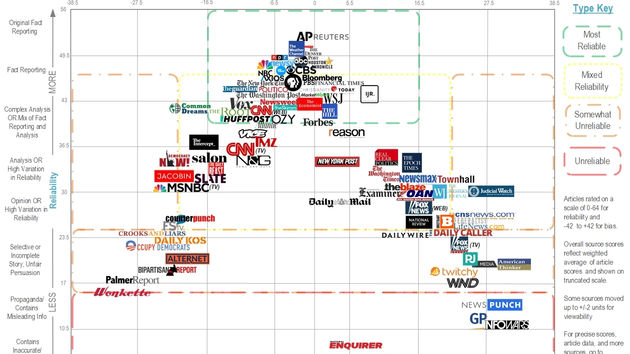Explore Your Topic.
The process of exploring your topic and gathering sources is a journey that can lead you down exciting and unexpected paths. As you take stock of the landscape and gather your sources, let your research topic and questions adjust to your discoveries and blossom with your unique perspectives. Below are four categories of research along with some resources to get you going. Jump in and explore one or all and see what you'll discover!
#1
Internet Sources
A quick internet search is the go-to strategy to answer our everyday questions and entertain our everyday interests. It provides such a diverse amount of sources that an explorer with a keen eye can gather both valuable and credible sources.
One thing to be aware of is the Top Level Domain (TDL), the URL endings such as .com, .edu, .gov, and .org as knowing this can help you assess the relative credibility of the site. Also valuable is this interactive media bias chart.
#2
Personal Sources
Personal sources are all about people, including you, speaking to their own experience. They can come from memoirs, autobiographies, personal journals or diaries, and surveys and interviews, even those you create and conduct firsthand. Collectively, these types of sources are called "primary sources."
Remember, written description is only one way to capture first hand experiences and perspectives. You may find it valuable to research photographs or more compelling to take photographs yourself to document a space or experience. A voice recorder may be useful if you want to capture an interview or the audio of a public or private space.
#3
Books & Articles
Exploring your topic through the sources offered by your college or local library or is an experience to take advantage of. They offer free professional sources that you would otherwise need to pay for. Journals, magazines, and books are the typical source types, both those in print and online databases. These sources are both academic (written by professionals in the field) and popular (written by journalists), but they still need to be read with a discerning eye for relevancy, credibility, and bias.
College libraries often offer a vast set of academic databases. Some of the more popular ones are JSTOR, Academic Search Ultimate, Ebscohost eBook Collection, Libby: eBooks and Audiobooks.
#4
Films and Videos
From documentaries to feature length movies, films and videos of all kinds can serve a variety of purposes. They can inspire, instruct, and entertain. They are also valuable historical artifacts that can provide evidence of cultural mindsets and mainstream ideas. They can be the center of analysis or provide compelling evidence. While we may have easy access to films and videos through Youtube and Netflix or other steaming services, your college library will have film-focused databases for a wide range of materials not found on popular apps like Hulu or Amazon Prime Video. Here's two of the most common ones you'll find:



Documentation.
Make sure to keep a list of all of your sources. This may initially look like a list of titles and URLs, but when you organize your work and apply it to a project, you will need to provide information on the sources you used. Documentation style guides are typically used for this purpose. There are several of them, but the ones most commonly used in college are MLA and APA.
